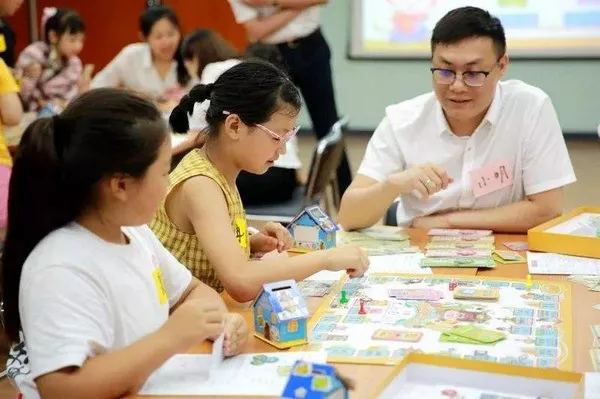Falling in love is often described as one of the most profound emotional experiences one can have. It is a multifaceted process that encompasses a range of feelings, behaviors, and physiological responses. As a psychologist, I have witnessed how love can transform individuals and relationships, and understanding the signs of falling in love can provide valuable insights into this intricate emotion.
In this article, we will explore the psychological and physiological indicators that signal someone is falling in love, the stages of love, and the emotional changes that accompany this beautiful journey. By recognizing these signs, individuals can navigate their feelings and relationships more effectively.
The Psychological Underpinnings of Love
Love is not merely an abstract concept; it has deep psychological roots. Various theories have been proposed to explain the phenomenon of love, including attachment theory, the triangular theory of love, and the biological perspective on love.
1. Attachment Theory
Attachment theory, developed by John Bowlby, suggests that the emotional bonds formed in early childhood with caregivers influence our relationships throughout life. People tend to develop different attachment styles—secure, anxious, or avoidant—that dictate how they engage in romantic relationships.
When falling in love, individuals often display behaviors consistent with their attachment styles. For example, someone with a secure attachment style may be more open to vulnerability and intimacy, while someone with an anxious attachment style may become overly preoccupied with the relationship.
2. The Triangular Theory of Love
Psychologist Robert Sternberg proposed the triangular theory of love, which consists of three components: intimacy, passion, and commitment. Falling in love typically involves a combination of these elements:
Intimacy refers to the emotional closeness and connection felt between partners.
Passion encompasses the physical attraction and sexual desire that often accompanies romantic feelings.
Commitment involves the decision to maintain the relationship over time.
The balance of these components can shift as relationships evolve, but they are essential in recognizing the signs of falling in love.
3. Biological Perspective
From a biological standpoint, love is influenced by various hormones and neurotransmitters. When people fall in love, their bodies release a cocktail of chemicals, including:
Dopamine: This neurotransmitter is associated with pleasure and reward, creating feelings of euphoria and motivation to seek closeness with the loved one.
Oxytocin: Often referred to as the “love hormone,” oxytocin is released during physical intimacy and fosters bonding and trust between partners.
Adrenaline: The rush of adrenaline can cause physical symptoms such as increased heart rate and sweaty palms, often associated with the excitement of new love.
These biological factors create a unique experience that contributes to the signs of falling in love.
Signs of Falling in Love
Falling in love is often accompanied by a range of emotional, behavioral, and physiological signs. Here are some of the most common indicators that suggest someone is experiencing the early stages of romantic love:
1. Constant Thoughts About the Person
One of the hallmark signs of falling in love is the preoccupation with thoughts about the other person. This might manifest as daydreaming, reminiscing about shared experiences, or fantasizing about a future together. Individuals may find it challenging to concentrate on tasks or conversations that do not involve their beloved.
2. Intense Emotional Reactions
Falling in love often leads to heightened emotional responses. Individuals may experience joy, excitement, and exhilaration when interacting with or thinking about their partner. Conversely, they may also feel anxiety or jealousy, especially if they perceive a threat to the relationship.
3. Increased Energy and Motivation
When in love, individuals often report feeling a surge of energy and motivation. This can manifest in various ways, such as taking better care of oneself, pursuing personal goals, or engaging in activities that involve the loved one. The excitement of love can serve as a powerful motivator to improve one’s life.
4. Desire for Physical Intimacy
Physical attraction and the desire for closeness are significant signs of falling in love. This desire can manifest as wanting to hold hands, cuddle, kiss, or engage in sexual intimacy. These physical expressions of love help solidify emotional bonds and create a sense of connection between partners.
5. Prioritizing the Other Person
Individuals falling in love often prioritize their partner’s needs and desires. This may involve making sacrifices, going out of their way to support the other person, or making plans that accommodate their partner’s interests. The willingness to put another person’s happiness above one’s own is a powerful indicator of love.
6. Increased Empathy and Compassion
Falling in love often leads to heightened empathy and compassion toward the partner. Individuals may become more attuned to their loved one’s feelings, needs, and challenges, leading to a stronger desire to support and understand them. This emotional connection fosters intimacy and strengthens the relationship.
7. Feeling a Sense of Belonging
When in love, individuals often experience a deep sense of belonging and connection. This feeling may be accompanied by a desire to share their life with the partner, including introducing them to family and friends or integrating them into personal social circles. This longing for shared experiences reflects the desire to build a future together.
See Also: How Do I Know if Someone is Truly My Soulmate?
8. Longing for Communication
In the early stages of falling in love, individuals often feel an intense desire to communicate with their partner. This may involve wanting to spend hours talking, texting, or sharing experiences together. The excitement of getting to know each other creates an insatiable curiosity and a need for connection.
9. Idealizing the Partner
Individuals falling in love often idealize their partner, focusing on their positive traits and overlooking flaws. This phenomenon, known as “rose-colored glasses,” can enhance feelings of attraction and affection. While idealization is common in the early stages of love, it is essential to maintain a balanced perspective as the relationship progresses.
10. Fear of Loss or Rejection
As individuals become emotionally invested, they may experience fear of losing their partner or facing rejection. This anxiety can manifest as jealousy, clinginess, or overthinking, reflecting the deep emotional attachment that is forming.
11. Experiencing Physical Symptoms
Falling in love often triggers physical responses, including increased heart rate, butterflies in the stomach, or sweaty palms. These physiological reactions result from the body’s hormonal changes and contribute to the excitement associated with love.
12. Desire for Future Together
A strong sign of falling in love is the desire to envision a future with the partner. Individuals may fantasize about shared experiences, such as traveling together, building a life, or even starting a family. This forward-thinking perspective indicates a deep emotional commitment.
13. Nurturing the Relationship
Individuals who are falling in love often feel motivated to nurture and invest in the relationship. This can involve engaging in thoughtful gestures, planning special dates, or taking the time to understand each other’s needs. The desire to create a strong foundation for the relationship is a crucial sign of love.
Stages of Falling in Love
Understanding the signs of falling in love can also benefit from recognizing the stages that often accompany this emotional journey. While every individual experiences love differently, the following stages provide a framework for understanding how love develops over time:
1. Attraction
The initial stage of falling in love often begins with attraction, characterized by physical allure and chemistry. This phase can include feelings of excitement, curiosity, and a strong desire to connect with the other person. The interplay of hormones, such as dopamine and adrenaline, creates a euphoric feeling that draws individuals together.
2. Infatuation
Infatuation often follows attraction, marked by intense feelings and an overwhelming desire to be with the partner. This stage is characterized by idealization and a sense of urgency to deepen the connection. Individuals may spend excessive time together and experience a heightened sense of excitement.
3. Understanding and Acceptance
As the initial infatuation subsides, individuals may enter a stage of understanding and acceptance. During this time, they begin to learn more about their partner’s values, goals, and flaws. This stage requires vulnerability and openness, as both partners navigate their differences and learn to communicate effectively.
4. Deepening Intimacy
With understanding comes a deeper sense of intimacy. Partners become more emotionally connected and share their innermost thoughts, fears, and aspirations. This stage often fosters trust and enhances the bond between partners, as they create a safe space for vulnerability.
5. Commitment
The final stage of falling in love involves a conscious commitment to the relationship. This may manifest as defining the relationship, discussing future plans, or making long-term promises. Commitment signifies a deep emotional investment and a desire to nurture the relationship over time.
Navigating the Journey of Love
Falling in love can be a thrilling yet complex experience. Here are some tips for navigating this emotional journey:
1. Stay Present
Embrace the journey of falling in love by staying present in the moment. Avoid getting too caught up in worries about the future or what could go wrong. Enjoy the connection and focus on building a strong foundation for the relationship.
2. Communicate Openly
Effective communication is key to navigating the complexities of love. Share your thoughts, feelings, and concerns with your partner to foster understanding and intimacy. Open dialogue can help prevent misunderstandings and strengthen the relationship.
3. Be Patient
Falling in love is a process that takes time. Be patient with yourself and your partner as you navigate the different stages of love. Understand that building a solid foundation requires effort and commitment from both individuals.
4. Embrace Vulnerability
Vulnerability is essential for deepening emotional connections. While it can be challenging, being open about your feelings, fears, and desires fosters trust and intimacy. Embrace the opportunity to share your true self with your partner.
5. Maintain Individuality
While falling in love often involves a strong desire for connection, it is essential to maintain your individuality. Continue to pursue personal interests, friendships, and goals outside the relationship. This balance will contribute to a healthier and more fulfilling partnership.
6. Reflect on Your Feelings
Take time to reflect on your emotions and the signs of falling in love. Understanding your feelings can provide clarity and help you navigate the complexities of love. Consider journaling or discussing your thoughts with a trusted friend or therapist.
7. Be Open to Change
Love is a dynamic emotion that evolves over time. Be open to the changes that may occur in your relationship and adapt as needed. Flexibility and a willingness to grow together will strengthen your bond.
Conclusion
Falling in love is a transformative experience marked by a range of emotional, behavioral, and physiological signs. Recognizing these signs can enhance your understanding of love and its complexities, enabling you to navigate your feelings and relationships more effectively.
From constant thoughts about the partner to increased energy, the signs of falling in love reflect the profound emotional connection that develops between individuals. Understanding the stages of love—from attraction to commitment—provides a framework for navigating this journey, fostering healthy and fulfilling relationships.
As individuals embrace the journey of love, they should prioritize open communication, patience, vulnerability, and self-reflection. By doing so, they can cultivate deep emotional connections and create lasting bonds that enrich their lives. Ultimately, falling in love is a beautiful, multifaceted journey that can lead to profound personal growth and fulfillment, making it an experience worth cherishing.
Related topics:





























